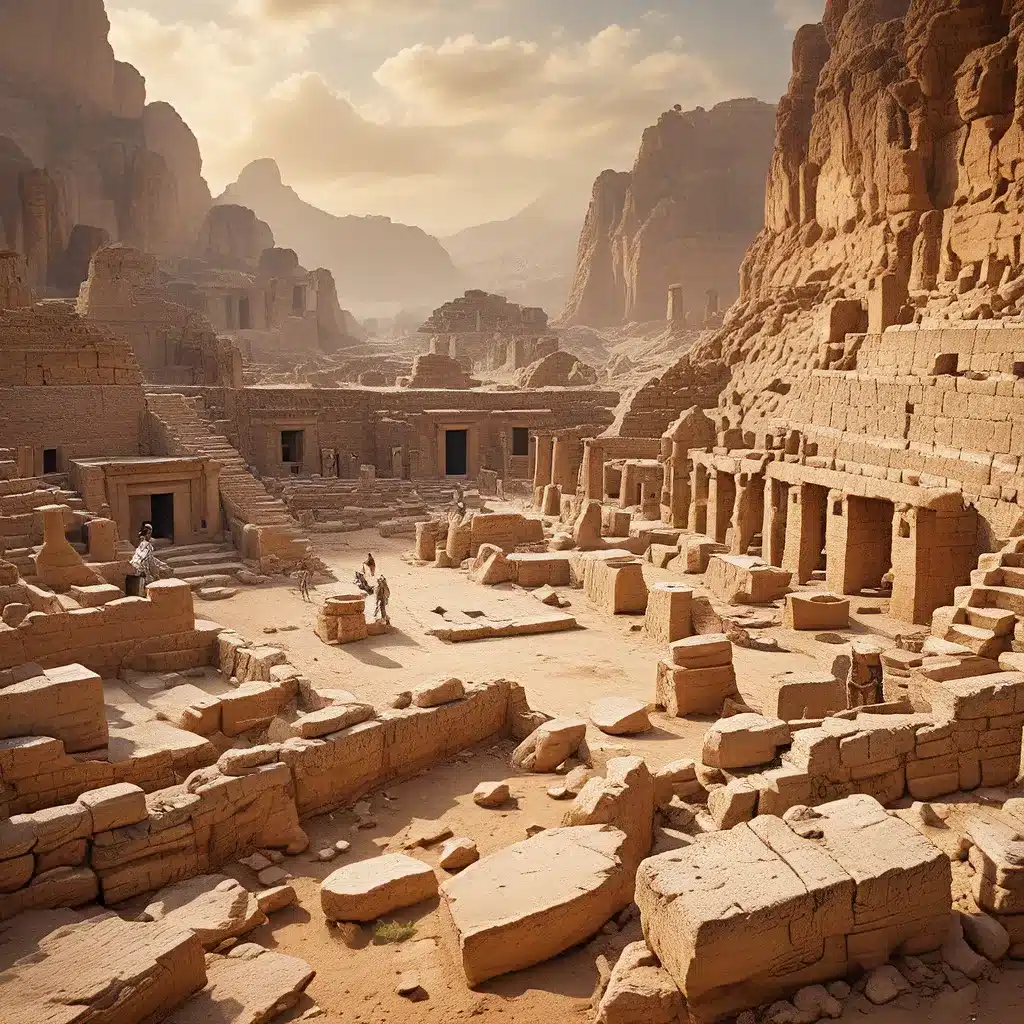
Uncovering the Mysteries of the Handbag Symbol Across Ancient Civilizations
Throughout the annals of human history, one of the more intriguing and perplexing symbols to emerge from the ancient world is the image of what appears to be a modern-day handbag. This curious motif has been found in the artistic expressions of diverse cultures, spanning from the Sumerians of Iraq to the Maori of New Zealand, and even the Olmecs of Central America. Deciphering the meaning and significance behind this seemingly ubiquitous emblem has captivated the imaginations of scholars and enthusiasts alike, as it promises to unveil profound insights into the interconnectedness of humanity’s ancient civilizations.
One of the earliest instances of the “handbag” motif can be seen in the ruins of Göbekli Tepe, a remarkable archaeological site located in southeastern Turkey. Dated to approximately 11,000 BC, Göbekli Tepe is considered one of the oldest temple complexes ever discovered, predating the construction of the pyramids by several millennia. Adorning the walls and pillars of this ancient sanctuary are finely carved animals, gods, and mythical creatures, hinting at the profound spiritual and cosmological beliefs held by its builders.
Nestled amidst this tapestry of ancient imagery are three distinct representations that bear a striking resemblance to modern-day handbags. Experts suggest that these “handbag” carvings may have served as symbolic representations of the fundamental elements of life on Earth, effectively defining the site as a temple where the reunification of the earth and sky, the material and non-material aspects of existence, were venerated.
Similar depictions of the “handbag” symbol have been discovered in the artistic traditions of other ancient cultures, further fueling the mystery surrounding its significance. In the Assyrian art of ancient Iraq, the “handbag” is shown being carried by a male figure, with the purse believed to contain magic dust. Likewise, in the art of the Olmecs of Mesoamerica, the “handbag” is portrayed as a container for herbs used for intoxication.
These intriguing parallels suggest that the “handbag” symbol may have served as a standard of measurement or a repository for sacred, transformative substances, transcending the boundaries of individual civilizations. This universality of the motif across disparate cultures raises profound questions about the interconnectedness of ancient human societies and their shared cosmological perspectives.
The Mystical Significance of the “Handbag” in Maori Mythology
The “handbag” symbol also appears in the cultural traditions of the Maori people of New Zealand, where it is imbued with profound spiritual significance. According to Maori mythology, a revered hero undertook a remarkable journey to the abode of the gods, where he acquired divine knowledge and wisdom. Upon his return to Earth, this heroic figure was said to be carrying three baskets filled with this celestial inspiration.
These Maori “handbags” bear a striking resemblance to the artifacts discovered at Göbekli Tepe, both symbolizing a deep reverence and gratitude for the gifts of wisdom and insight believed to be bestowed by higher powers. These depictions not only serve as tangible representations of ancient narratives but also highlight the universal human inclination to celebrate and preserve the gifts of celestial inspiration.
The “Handbag” as a Cosmological Symbol in Ancient Egypt
The intriguing symbolism of the “handbag” extends even further, with ancient Egyptian art revealing remarkable depictions of this motif within their hieroglyphic system. In these representations, the “handbag” is portrayed as a divine abode for gods and goddesses, with the straps symbolized by the domed poles of portable tents and the square bottom representing the cloth or animal skins draped across these poles.
This structural resemblance to architectural designs such as the Native American teepee and the central Asian yurt underscores the universality of this symbol across diverse cultures and eras. These numerous occurrences of the “handbag” motif suggest its role as a cosmological representation, cleverly camouflaged within the ordinary guise of a household item, such as a basket or a container.
Exploring the Symbolism and Implications of the “Handbag” Motif
The widespread presence of the “handbag” symbol in the artistic expressions of ancient civilizations raises intriguing questions about its deeper significance. One possible theory is that the image represents a symbolic reunification of the earth and sky, the material and non-material aspects of existence. The semi-circle of the image, which appears to be the “bag’s” strap, may symbolize the hemisphere of the sky, while the solid square base could represent the Earth.
In many ancient cultures, the figure of a circle was often associated with concepts of spirituality or non-materiality, while the square was frequently linked to the earthly realm and materiality. Therefore, the “handbag” motif may have been used to convey the idea of the integration of these two fundamental elements of the cosmos.
The Lost Kingdoms website provides a wealth of information on the ancient world, including the latest archaeological discoveries and emerging theories about the interconnectedness of human civilizations. By delving deeper into the symbolism and implications of the “handbag” motif, we may uncover profound insights into the spiritual and cosmological worldviews of our ancestors, further enriching our understanding of the human experience across time and space.
Conclusion: Unraveling the Secrets of the Ancient “Handbag”
The recurrence of the “handbag” symbol in the artistic and cultural traditions of diverse ancient civilizations is a testament to its enduring significance and the intricate web of connections that have long existed among human societies. As we continue to explore and decipher the mysteries behind this intriguing emblem, we may unlock a deeper understanding of the shared wisdom, beliefs, and aspirations that have united humanity throughout its long and fascinating history.
Through the lens of archaeological insights, we can begin to decode the profound insights and celestial inspiration that motivated the builders of Göbekli Tepe, the Assyrians, the Olmecs, and the Maori people. By unraveling the secrets hidden within this timeless symbol, we may just discover the timeless truths that have guided the human journey from the dawn of civilization to the present day.


